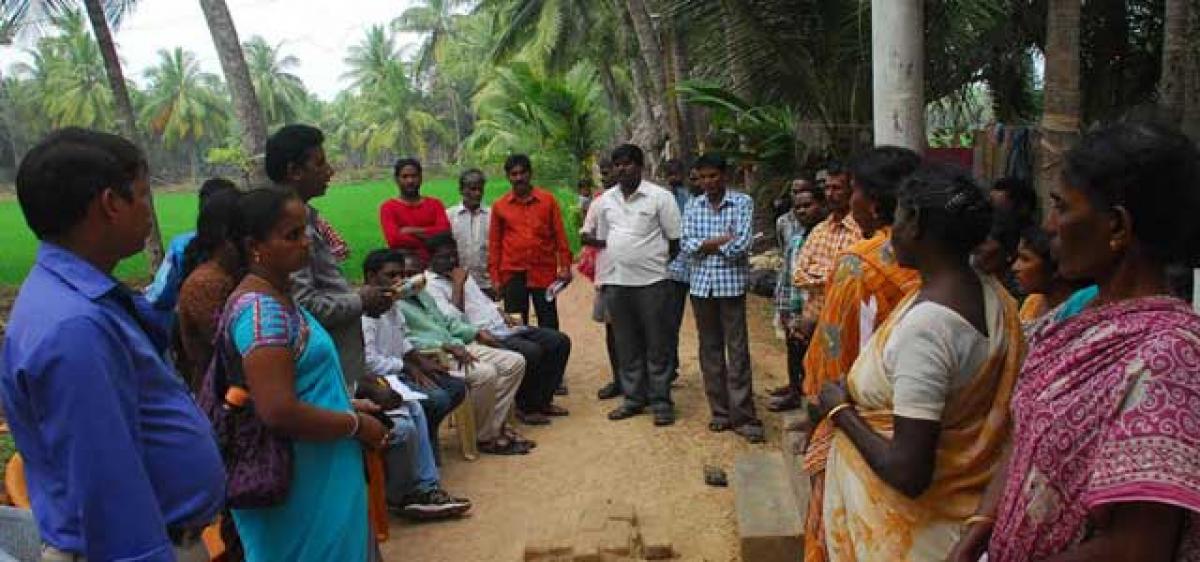Green revolution in Godavari delta under aqua threat

The Godavari delta region spread over West and East Godavari districts, the pivot of green revolution, may soon be starved of foodgrains in view of lurking danger of aqua threat.
Konaseema region since the enforcement of a crop holiday by paddy farmers in 2011
Amalapuram (East Godavari): The Godavari delta region spread over West and East Godavari districts, the pivot of green revolution, may soon be starved of foodgrains in view of lurking danger of aqua threat.
The lush-green paddy fields and swaying coconut plantations, the trade mark of the Godavari delta, seems making way for the vast expanse of aqua ponds. East Godavari district alone witnesses a sharp decline in paddy production by 2.43 lakh tons last year.
The Godavari delta with 10 lakh-odd acres in the two districts produces over 40 lakh tons of paddy every year. Of the total 4.80 lakh acres of paddy area in the district, fish and aqua ponds emerged in over 50,000 acres.
The Konaseema region located close to the sea mouth has become more susceptible to aqua threat. Construction of a barrage at Dhavaleswaram and irrigation canal system by Sir Arthur Cotton heralded green revolution in the late 60s in the delta region, giving a big push to paddy cultivation.
According to Konaseema Rythu Parirakshna Sangham leader Matta Mahalakshmi Prabhakar, aqua boom found its way into the Konaseema region since the enforcement of a crop holiday by paddy farmers in 2011.
The failure of modernization of drainage and irrigation systems to become a reality and subsequent flood threat and viability issues, associated with paddy cultivation, have been forcing the traditional paddy growers into the relatively more lucrative aquaculture, Prabhakar said. Acute shortage of farm hands for the labour intensive paddy cultivation played its part to accelerate the trend.
A five-member delegation of leaders from the Andhra Pradesh Rytu Sangham came across the tell-tale signs of an eco-threat and contamination of drinking water sources caused by aquaculture in the Konaseema region a few days ago.
Paddy growers complained to the visiting team on how the paddy fields were giving in to fish and prawn ponds in violation of guidelines.
M Jashuva from Kodurupadu village in Allavaram mandal lamented that the irrigation canals turned into drainage channels with the effluents being let out from the aqua ponds.
“Water has become a commodity in every village in the Konaseema region with mushrooming of water plants, manifestation of contamination of drinking water sources”, he added.














